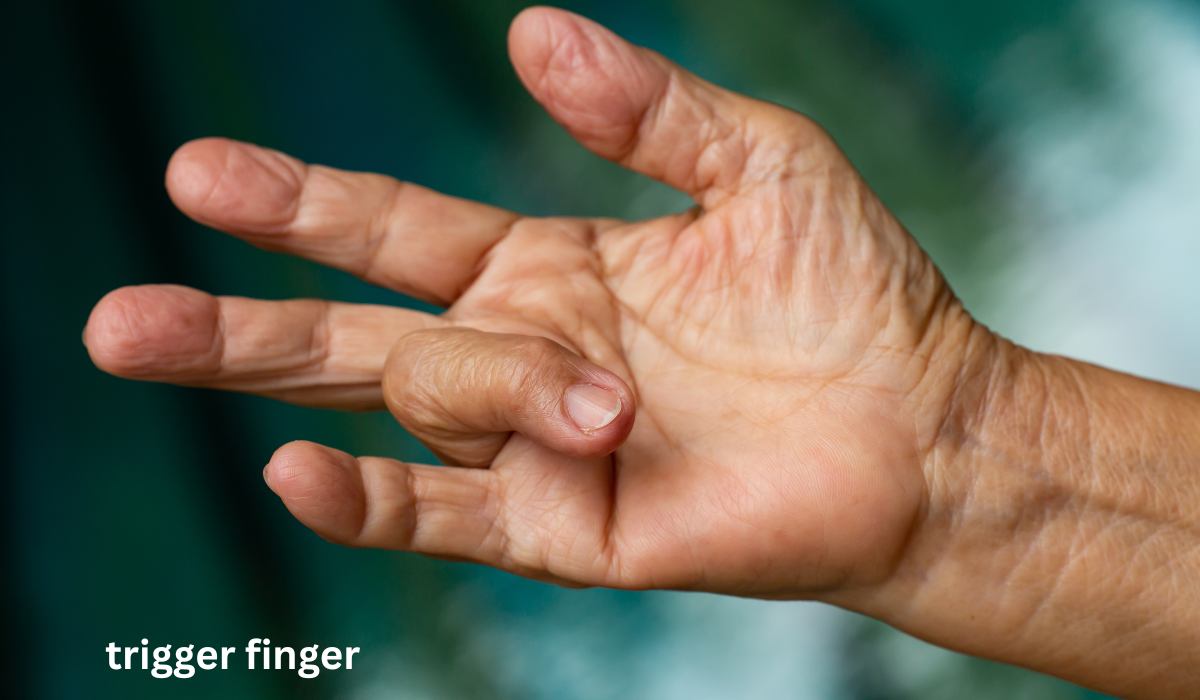Trigger finger, medically known as stenosing tenosynovitis, might not be the most familiar term. Still, it can profoundly impact athletes, especially those who rely on precision and repetitive hand movements. From gripping a baseball bat to tackling an opponent in football, a minor issue in the hand can mean a significant blow to performance. One such example is former Major League Baseball star Mark Teixeira, a famous athlete with trigger finger, who had to carefully manage this condition to maintain his professional edge.
This article explores the trigger finger, its symptoms and causes, and how it has affected high-performing individuals like Mark Teixeira. Most importantly, we’ll look at ways athletes can overcome and treat this condition to stay at peak performance.
What Is Trigger Finger?
Trigger finger is a condition in which one or more fingers get stuck in a bent position and may snap straight when moved, like pulling and releasing a trigger—hence the name. The condition occurs when the tendons that control finger movement become inflamed, making it challenging to move the fingers smoothly.
For athletes, this poses a unique problem. Sports that require fine motor control, gripping, or repetitive hand movements can exacerbate symptoms, turning a mild inconvenience into a performance-hindering ailment.
Common Symptoms of Trigger Finger
- Fingers catching or locking when bent
- Stiffness in the fingers, especially in the morning
- A popping or clicking sensation when moving the fingers
- Tenderness or a lump at the base of the affected fingers
While anyone can develop a trigger finger, athletes are particularly at risk due to repeated stress on their hands during training and competition.
Famous Athlete with Trigger Finger: Mark Teixeira’s Story

One of the most noteworthy examples in sports is Mark Teixeira, a former MLB player who battled a trigger finger during his career. Teixeira, known for his powerful swings and defensive prowess at first base, struggled with his trigger finger when his team relied on his performance. The condition impacted his ability to grip the bat firmly and adjust his defensive stances, both critical game components.
Managing this condition requires physical therapy, reduced activity, anti-inflammatory treatments, and sometimes minor medical procedures. Teixeira’s example highlights a critical lesson for athletes—recognizing symptoms and seeking prompt treatment can be the difference between managing the trigger finger effectively or letting it derail your career.
Another notable case outside the world of sports is Steve Vai, a legendary guitarist whose repetitive finger movements caused severe trigger fingers. Vai’s surgical intervention shows the importance of early diagnosis and advanced treatment options for ensuring continued performance, whether in music or sports.
What Causes Trigger Finger in Athletes?
For athletes, several factors contribute to the development of the trigger finger. These include:
- Repetitive Movements
Constant gripping of equipment like bats, tennis racquets, or football helmets can lead to inflammation of the tendons.
- Overuse Injuries
Repeating the same motion during training can cause wear and tear in the hand, increasing the likelihood of trigger fingers.
- Underlying Conditions
Athletes with diabetes or rheumatoid arthritis are at a higher risk of developing trigger fingers due to associated inflammation.
- Age and Gender
While triggerfingersr can affect anyone, it is more common in individuals over 40 and tends to impact women slightly more often than men.
Athletes need to be particularly vigilant. Even mild symptoms can develop into more severe issues if left untreated.
Treatment Options for Athletes with Trigger Finger
The good news is that the trigger finger is treatable, and most athletes can fully recover with proper care and management. Here’s a breakdown of standard treatment options:
1. Rest and Activity Modification
Reducing repetitive hand movements and resting the affected hand often resolves mild cases.
2. Stretching and Physical Therapy
Working with physical therapists specializing in hand conditions can help improve flexibility and reduce inflammation. Exercises targeting the fingers and hand are efficient.
3. Splinting
A splint can keep the finger extended, preventing locking or clicking and allowing the tendons to heal.
4. Medications
Nonsteroidal anti-inflammatory drugs (NSAIDs) like ibuprofen can relieve pain and reduce swelling. Corticosteroid injections into the affected area may also provide significant relief.
5. Surgical Intervention
A minor surgical procedure to release the tendon sheath may be necessary for severe cases. This has a high success rate and generally allows athletes to resume activities within weeks.
6. Preventative Measures
Once treated, focus on preventing recurrence through proper warm-ups, strength training, and using protective equipment.
Athletes like Mark Teixeira highlight the importance of paying attention to early symptoms and consulting with specialists, ensuring that even the most minor conditions don’t result in long-term setbacks.
How Athletes Can Stay Ahead of Trigger Finger
Trigger finger doesn’t have to be a career-defining issue for athletes. Here’s how you can minimize your risk or manage symptoms:
- Stay Vigilant: Feel a catch or click in your finger? Please don’t ignore it. Early symptoms can escalate if left untreated.
- Warm-Up Properly: Take time to prepare your joints and tendons for the demands of your sport.
- Alternate Movements: Incorporate cross-training into your routine to reduce repetitive strain on your hands.
- Consult an Expert: Work with sports medicine professionals for tailored recovery plans if needed.
By proactively managing symptoms and seeking proper treatment, athletes can ensure they stay at the top of their game.
Frequently Asked Questions About Trigger Finger
1. Can the trigger finger go away on its own?
Mild cases may resolve with rest and activity modification, but more severe cases often require medical intervention.
2. How quickly can athletes recover from trigger finger surgery?
Most athletes can resume light activities within a few weeks and return fully to sports in 6-8 weeks.
3. Does repeated use of equipment increase the risk of trigger fingers?
Yes, repetitive strain from gripping sports equipment significantly increases the likelihood of developing a trigger finger.
4. Are there preventative exercises for the trigger finger?
Yes, hand stretches and strengthening exercises can reduce strain and improve flexibility, lowering the risk of trigger fingers.
5. Can athletes continue playing while managing e trigger finger?
Some athletes can continue playing with modified activities or splinting, depending on severity. However, resting the affected hand is recommended.
Take Control of Your Hand Health Today
Trigger finger may seem like a minor condition, but it can be a game-changer for athletes. The story of Mark Teixeira, a famous athlete with a trigger finger, proves how early recognition and proper management are critical for maintaining performance.
Whether you’re a professional athlete or rely on hand movements, understanding how to prevent and treat conditions like trigger finger is essential for peak performance. Don’t wait until it impacts your game—stay proactive, take action, and seek advice from a healthcare professional at the earliest signs.

